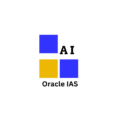Oracle IAS, the best coaching institute for UPSC/IAS/PCS preparation in Dehradun (Uttarakhand), brings to you views on important issues.
Syllabus: Mains paper 2 | Healthcare, Government policies
'Universal health coverage is still a distant dream'. Discuss in the light of recently announced Ayushman Bharat scheme.
Why in news?
- The Ayushman Bharat—Pradhan Mantri Jan Arogya Yojana (PMJAY), a health insurance scheme announced in the last budget, will be launched on 23 September.
- It is arguably the most ambitious social health insurance (SHI) programme ever launched anywhere in the world.
- PMJAY will provide insurance up to ₹500,000 per family per year for in-patient secondary and tertiary treatment.
- It will cover over 100 million vulnerable families, which is about 500 million people, the poorest 40% of India’s population.
- Treatment would be provided by empanelled public and private hospitals.
About PMJAY
- PMJAY is actually the second tier of Ayushman Bharat, a two-tier scheme. It will ride on the first tier, a network of 150,000 health and wellness centres (HWCs) that will provide free universal and comprehensive primary health care.
- The HWCs will serve as the awareness, screening and referral link between patients and PMJAY.
- A cadre of frontline health service professionals called Pradhan Mantri Aarogya Mitras (PMAMs) is being trained to facilitate the provision of treatment to beneficiaries at hospitals.
Relevance of PMJAY
- The significance of PMJAY has to be seen in the context of existing health conditions and health service delivery systems in India.
- With an average life expectancy of 68.3 years, India trails all its Asian neighbours barring Afghanistan, Pakistan, Myanmar and Laos.
Healthcare expenditure not satisfactory
- Healthcare is one important factor among several that determine health outcomes along with income, nutrition, and hygiene.
- The World Health Organization recommends that a country should spend at least 4% of its gross domestic product (GDP) on health.
- India’s health expenditure at 3.9% of GDP is comparable to this norm.
- However, the health ministry’s National Health Accounts show that total government health expenditure is only an appalling 1.1% of GDP.
- Well over 70% of health expenditure is privately financed.
- More than 62% is direct out of pocket (OOP) spending by patients as against the WHO-recommended OOP ceiling of 40%.
Less focus on preventive care
- Preventive health spending is more equitable and much more cost effective in improving health standards.
- But less than a quarter of India’s meagre public health expenditure is allocated to preventive care.
- There is thus the continuing high incidence of communicable diseases.
- There is a rising incidence of non-communicable diseases with income growth, lifestyle changes and environmental degradation, resulting in a rising total burden of disease.
Challenges to PMJAY
Unknown financial cost of the programme
- No actuarial database is available to yield a probability distribution of the expected number of different health episodes requiring different treatments at varying costs.
- Without such a database, insurance agencies cannot estimate the required premium to adequately cover the pooled risk —the ultimate cost of the programme.
Coverage erosion
- A pattern observed in several countries is that when costs escalate, the package covered by SHI is shrunk and co-payments and coverage caps are introduced, thereby raising the burden of OOP spending.
- Some private providers might be pushing high-cost treatments not covered by SHI to enhance their profit margins, thereby further raising the OOP burden on patients.
Implementation failure
- PMJAY will ride on the first tier of Ayushman Bharat, a network of 150,000 HWCs spread throughout the country.
- Fixing this weak primary care foundation of India’s public healthcare system is more urgently needed than providing insurance for secondary and tertiary care.
What is the way forward?
- These challenges do not imply that PMJAY will fail but that it is only a first step on the road to universal SHI.
- As a follower country, India can learn from the experiences of others.
- The Thai model with excellent SHI coverage and OOP spending down to 18% is increasingly seen as the global best practice.
Contact us for:-
- IAS coaching in Dehradun
- PCS/UPPCS/UKPCS coaching in Dehradun
- Current Affairs classes in Dehradun
- For getting detailed feedback on your answers and improve answer writing
- Phone Number:- 9997453844
Latest posts by Hemant Bhatt (see all)
